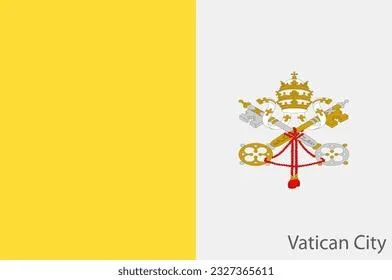EXPLORING VATICAN CITY: THE SMALLEST COUNTRY IN THE WORLD.

The Smallest Country in the World: Exploring the Wonders of Vatican City
When one thinks of small countries, the mind may wander to far-flung islands or obscure European enclaves. Yet, the title of the smallest country in the world belongs to Vatican City, an extraordinary place that stands as a unique blend of history, religion, and sovereignty. Covering an area of just 44 hectares (110 acres), Vatican City is a captivating microstate that packs an enormous punch in terms of culture, art, and global significance.

A Brief History
Vatican City, officially known as the Vatican City State, is an independent city-state enclaved within Rome, Italy. It serves as the spiritual and administrative center of the Roman Catholic Church and is the official residence of the Pope. Its history is inextricably linked with the rise and development of the Catholic Church, making it a significant destination for pilgrims and tourists alike.
Vatican City traces its roots back to the Lateran Treaty of 1929, which recognized its sovereignty as an independent state. This treaty resolved the “Roman Question,” the long-standing dispute between the Italian government and the Papal States. As a result, Vatican City was established as a separate entity, and it remains the world’s smallest independent state to this day.
A Feast for Art Lovers
One of the most remarkable aspects of Vatican City is its immense collection of art and historical treasures. The Vatican Museums, a network of museums and galleries, house an astonishing array of artworks, artifacts, and historical documents. Among the most famous works is the Sistine Chapel, adorned with Michelangelo’s breathtaking frescoes, including the iconic “Creation of Adam.”

Art enthusiasts can also admire Raphael’s Rooms, home to frescoes painted by the renowned artist Raphael, and the Gallery of Maps, which features a series of painted topographical maps of Italy. These collections provide an incredible insight into the rich history of the Catholic Church and its enduring influence on art and culture.
St. Peter’s Basilica: A Marvel of Architecture
Another architectural wonder within Vatican City is St. Peter’s Basilica. This grand cathedral, designed by some of the most notable architects of the Renaissance era, stands as a masterpiece of Renaissance architecture. The dome of St. Peter’s Basilica, designed by Michelangelo, is one of the largest in the world and offers panoramic views of the city.
Visitors to St. Peter’s Basilica can also pay their respects at the tomb of St. Peter, one of the twelve apostles of Jesus and a central figure in the establishment of the Christian Church. The basilica is a place of worship and pilgrimage for millions of Catholics from around the world.
The Swiss Guard: Protectors of the Pope
The iconic Swiss Guard, dressed in their distinctive Renaissance-era uniforms, stands as the official military force of Vatican City. Established in 1506, this small but dedicated group is responsible for the safety of the Pope and the security of the Vatican. The Swiss Guard is a symbol of the unique blend of tradition and modernity that characterizes the city-state.
Vatican City as a Sovereign State
Despite its diminutive size, Vatican City functions as a fully independent state with its government, postal service, and banking system. The Pope, the leader of the Catholic Church, serves as the head of state and exercises executive, legislative, and judicial authority within the Vatican City. The city-state also maintains diplomatic relations with countries around the world, ensuring its place on the global stage.

The Swiss Guard, mentioned earlier, is not just a ceremonial presence; they are trained to protect the Pope and the sovereignty of the Vatican. This demonstrates that, despite its small area, the city-state is fully capable of safeguarding its independence.
A Unique Educational Hub
Vatican City also boasts educational institutions of global acclaim. The Vatican Library, established in the 15th century, houses a vast collection of historical documents, manuscripts, and rare books. It is a valuable resource for scholars and researchers interested in the history of the Catholic Church and the development of Western civilization.
Additionally, the Pontifical University of St. Thomas Aquinas, commonly known as the Angelicum, offers academic programs in theology, philosophy, and related fields. Many students from around the world come to study at this prestigious institution.
Challenges and Controversies
While Vatican City is a symbol of history, culture, and faith, it has not been without its share of challenges and controversies. Issues such as financial scandals and allegations of corruption have raised questions about transparency and accountability within the city-state. These challenges underscore the complex nature of governing a religious institution and an independent state simultaneously.
Visiting Vatican City
For those wishing to visit Vatican City, there are some important considerations to keep in mind. Due to its compact size and global significance, the city can get crowded, especially during peak tourist seasons. It is advisable to plan ahead, book tickets for attractions, and be prepared for security checks when entering the museums and basilica.
Respecting the cultural and religious significance of the site is of utmost importance. Dress modestly when visiting St. Peter’s Basilica and the Vatican Museums, and be mindful of the religious practices taking place within the city. When the Pope delivers his weekly Angelus prayer or special events are held, large crowds gather in St. Peter’s Square.
In conclusion, Vatican City, as the world’s smallest country, is a place of profound historical, cultural, and spiritual significance. Its art, architecture, and religious heritage make it a must-visit destination for travelers from around the world. While it may be small in size, it is undeniably vast in terms of its influence and importance on the global stage. A visit to Vatican City is a journey through time, offering a glimpse into the heart of the Catholic Church and the art and culture that have flourished under its patronage.















